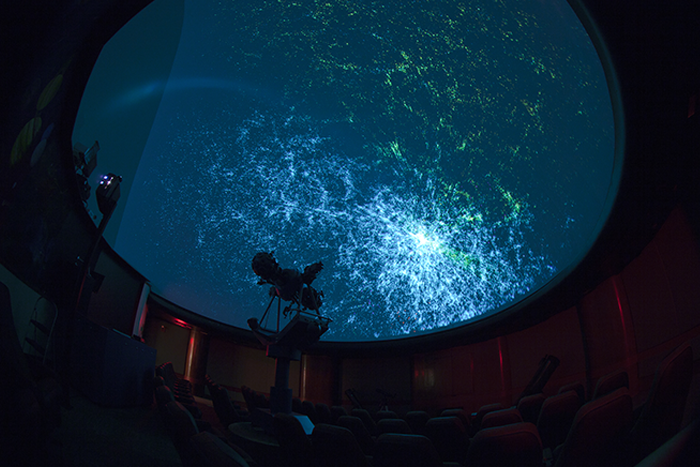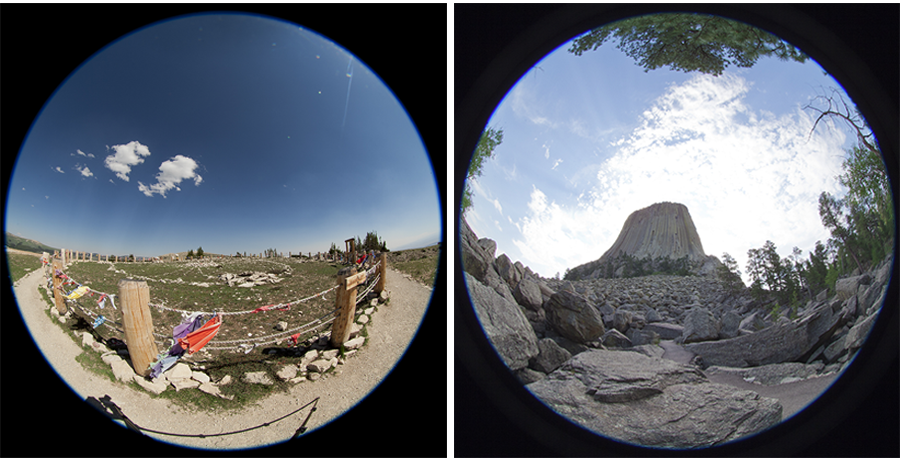For generations the planetarium has been the go to place for stargazers of any age to observe the vast tapestry of thousands of stars that could otherwise only be seen in the most remote areas far from city lights. Over time as technology in the planetarium improved we began to offer our guests virtual trips to alien planets and distant galaxies utilizing what we all now know as full dome video technology. The planetarium has always been a gateway to astronomy, but I believe it has become more than that. It is the most advanced immersive classroom, a place where people can come to learn just about anything and feel as though they are there. The whole “the sky is the limit” just got a whole new meaning when it comes to the immersive classroom. In this blog I’ll show you why that is the case!

Image of Derek doing his thing at Emil Buehler Perpetual Trust Planetarium, Seminole State College of Florida. Photo credit: Bernard Brzezinski
"In today’s planetarium the teacher can do more than just tell the story of the night sky, they can impart the story of our Universe."
The Final Frontier
I have always had trouble seeking a career that would ultimately satisfy my constant thirst for knowledge. My interests run the gamut from science to history to music to cars, to list a few. Astronomy however always seemed to rank number one on my list of interests ever since I was a child. Why? Well it’s the final frontier! It’s the one place we humans really haven’t been; the planetarium is a compromise. Implementing virtual reality in the planetarium can allow visitors to explore almost anywhere they would want to go. When we installed our full dome video system years ago we were very excited to work with SCISS and utilize their Uniview software. Uniview now allowed us to go anywhere in real time, which fit well in our philosophy of presenting completely live and interactive programs for which we pride ourselves on in the planetarium field. Now we could take attendees on a trip to Mars, fly out of our home galaxy, or take a trip through the human body. The immersive classroom was beginning to take shape.
The last piece of the puzzle that was missing in our immersive classroom is the teacher. I find that the most effective educators are also storytellers, my favorite teachers were the ones that were able to tell a narrative. Often visitors remember the person either in the back or center of the planetarium that ran the show and their ability to recount a fascinating story about the night sky. In today’s planetarium the teacher can do more than just tell the story of the night sky, they can impart the story of our Universe.

Image of the Uniview universe structure. Photo credit: Derek Demeter
The planetarium, though not as sleek as a Delorean, is a time machine, taking our audience back to any time period. One of our more recent shows discusses the fate of the dinosaurs and transports our guests to the Hell Creek Formation in modern day Montana where we can find the K-PG boundary. Being immersed in this barren landscape allows us to tell the story behind the science of how we know that the dinosaurs disappeared around 65 million years (well most of them, birds are dinosaurs too!) We then take our time machine into Earth orbit and overlay several paleontological maps created by Dr. Ron Blakey that show the plate tectonic activity from the Triassic and Createcuous periods to modern day and how much our Earth’s surface has changed over time. Sure this same thing could be done in a textbook or video, however the planetarium engages the audience in a way that leaves a lasting impression.
Immersive Classroom Magic
The immersive classroom is not limited to just science either. Recently we created a series of shows in conjunction with the Humanities Department at Seminole State College of Florida. One focused on the American Civil War, the other was about Native American history and astronomy. We travelled to several locations in the United States to capture special fisheye images that we then imported into Uniview utilizing the fisheye image uploader. As a result we were able showcase various areas: Gettysburg, the Appomattox courthouse, Chaco Canyon and Big Horn Medicine Wheel.

Fisheye images of the Big Horn Medicine Wheel and Devils Tower National Monument. Photo credit: Derek Demeter
Being surrounded by these beautiful landscapes connects the audience as if they were actually on tour in real life. Adding authentic sound effects recorded at the sites can also enhance the sensory depth of the virtual reality experience. Of course sometimes it may prove difficult to travel, however through partnerships, funding could be available for such projects. Perhaps there is a location nearby that teachers are unable to take their students to but can be done virtually in your immersive classroom. You could capture fisheye images and record sound and then provide those students with a virtual field trip in your planetarium. These partnerships strengthen the need for a planetarium in the local community. It also removes the notion that all a planetarium can do is view the stars. Teachers are always looking for ways to enhance learning in various fields of learning. The planetarium is just that enhancement. Any way the planetarium can increase its position in the community is a good thing!
"In many ways we get to be like the Magic School Bus, taking our audience on a grand adventure to incredible places"
There are few places where people can go that showcase the grandeur of our Universe other than the planetarium. In many ways we get to be like the Magic School Bus, taking our audience on a grand adventure to incredible places, and with the aid of a knowledgeable educator we are able to give them an experience they will never forget.
So…Mr/Mrs teacher, where are we going to explore in class today?

